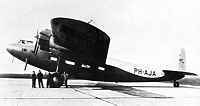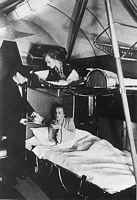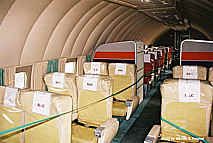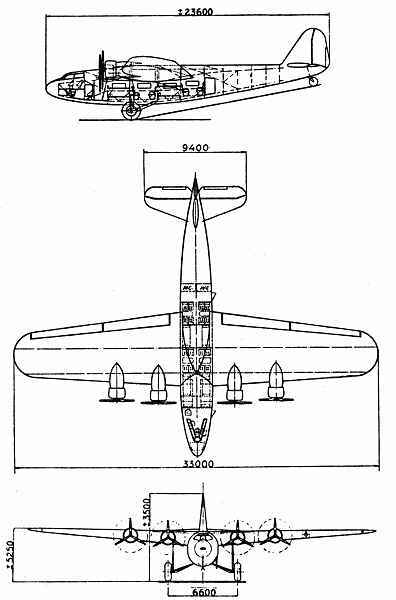The Flying Hotel is, no doubt about it, the most prestigious and accomplished effort of the pre-war Fokker designs. (Funny how 70 years later the same name was adopted by Airbus Industries for their giant A380.) After the F-VII series had culminated in the F-XVIII, the Dutch factory proceeded to design 3 more models with the Fokker wooden wing, but with a circular fuselage construction, still a Fokker-like cloth-covered frame. While the F-56 never made it beyond the drawing board, both the F-XX Zilvermeeuw and the F-36 Arend have been built and flown. The F-37 design was an F-36 with retractable landing gear and 100km longer range.

enormous wheels, 1.80m diameter, for use on muddy airfields.
A Fokker consideration kept up until after the F-27 Friendship:
A road surface would be a damned sight better than some of the fields those Friendships land on.
Hammond Innes, Solomons Seal  
KLM ordered Fokker to design the F-36 to their specifications in 1934, but never bought more than one, the prototype. Still, in 1936 Albert Plesman called the F-36 the best four engine aircraft now existing , but canceled all further orders. After having been used on the European lines, Arend was finally sold to an English company.
|


 the best four engine aircraft now existing, but canceled all further orders. After having been used on the European lines, Arend was finally sold to an English company.
the best four engine aircraft now existing, but canceled all further orders. After having been used on the European lines, Arend was finally sold to an English company.






